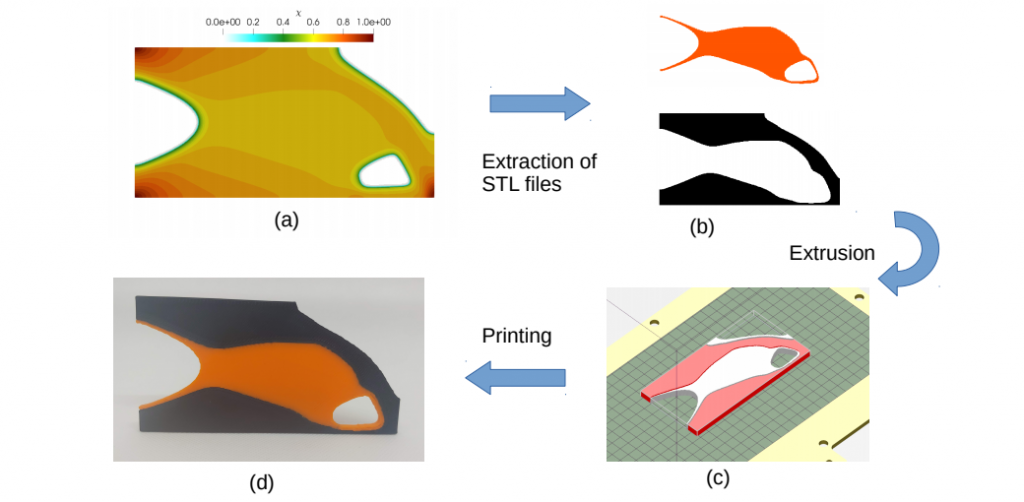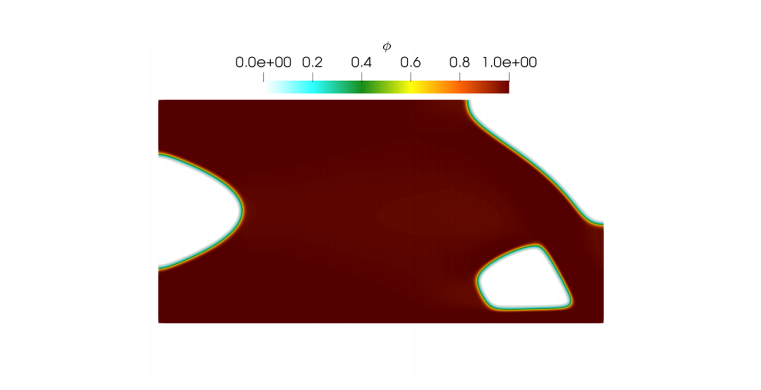Researchers from Italy and Germany continue along the path so many are following in refining and perfecting 3D printing processes. In the recently published ‘Structural multiscale topology optimization with stress constraint for additive manufacturing,’ authors Ferdinando Auricchio, Elena Bonetti, Massimo Carraturo, Dietmar Hömberg, Alessandro Realik, and Elisabetta Rocca are experimenting with ways to improve topology with new algorithms, parameters, and workflows in FDM 3D printing and additive manufacturing for industrial production.
Better functionality in parts is the goal as the authors examined methods for optimizing geometries, analyzing stress constraints, and exploring further ways to create functionally graded material structures (FGMs), along with the potential for using homogenization methods. In using FGMs, they expect to also be able to create structures that are multi-material graded also, and in allowing for a constraint on the stress σ they can improve AM processes—especially for ‘lightweight structures with small material volume.’
“As it is known, one of the main characteristics of AM technology is the possibility to construct objects with prescribed macroscopic and microscopic structure,” stated the researchers. “We aim to introduce a model to get a combined optimization of the two scales of this structure: a macroscopic scale corresponding either to the presence of material or to the presence of no material (i.e. voids), and a microscopic scale corresponding to the microscopic density of the material.”
The authors created a model of double phase-fields, with two sets of ‘positive measure’ meant to offer optimization of both the macroscopic and microscopic scales of the structure. The new model defines both material presence, and density.

Cantilever beam: Sensitivity study of the graded-material structure with respect to the parameter κ2 . χ value distribution.

Cantilever beam: Sensitivity study of the graded-material structure with respect to the parameter κ2 . Von Mises stress value distribution.
As a sample for their project, the authors manufactured an optimized cantilever beam on an FDM 3D printer at the University of Pavia ProtoLab. They were able to use two different polymer filaments, employing an ‘extremely intuitive approach,’ with an χ distribution threshold, separating structures into two regions for multi-material production. And while they found that this technique did not allow them to vary material density as hoped, they are working on more complex methods for the future.

Description of possible workflow to obtain from a continuous χ distribution a 3D printed object: In the first step the continuous χ distribution (a) is split in two parts and the corresponding .STL files are generate (b), in a second step the 2D geometries are extruded to obtain a printable file (c) which can be directly sent to the FDM machine to obtain the printed structure (d).
The team was successful in creating the FGM structures they were striving for, through intense analysis and the creation of a numerical algorithm, along with the introduction of a ‘simple but effective’ workflow allowing for 3D printing of samples in their research.
“As further outlooks for the present contribution we plan to investigate the influence of the microstructure on the material model and to extend the numerical algorithm to 3D problems,” concluded the researchers.
Optimization of topology is ongoing within 3D printing, from streamlining workflow in creating orthotics to considering fields and implicit geometry, to improving components for the automotive industry, and more. What do you think of this news? Let us know your thoughts! Join the discussion of this and other 3D printing topics at 3DPrintBoard.com.
[Source / Images: ‘Structural multiscale topology optimization with stress constraint for additive manufacturing’]Subscribe to Our Email Newsletter
Stay up-to-date on all the latest news from the 3D printing industry and receive information and offers from third party vendors.
You May Also Like
3D Printing News Briefs, April 27, 2024: Research, Digital Dentistry, Cycling, & More
We’re starting today’s 3D Printing News Briefs with some research into 3D printed luminescent quantum-dot polymer architectures and free-form laser beam shaping, and then on to an open source 4-axis...
HP & INDO-MIM Collaborate to Boost Metal 3D Printing in India
HP Inc. and INDO-MIM, a US- and India-based supplier of metal injection molding (MIM) powders and contract manufacturer, have announced that the two companies will collaborate to accelerate additive manufacturing...
3D Printing News Briefs, February 17, 2024: Shot Blasting, Service Bureaus, & More
In today’s 3D Printing News Briefs, we’re starting out with post-processing, as SKZ Würzburg is using a shot blast system from AM Solutions for its research. Moving on to business,...
3D Printing News Unpeeled: Not That Kind of Organ 3D Printing
GKN Aerospace will create a 150 jobs in Trollhattan Sweden with an investment of $60 million part of which comes from the Swedish Energy Agency’s Industriklivet initiative. The investment will...
































